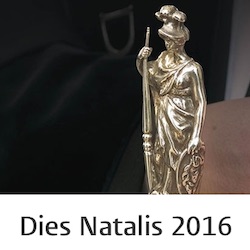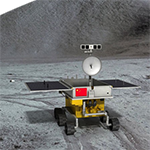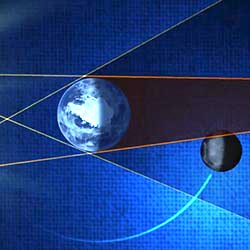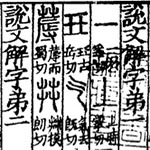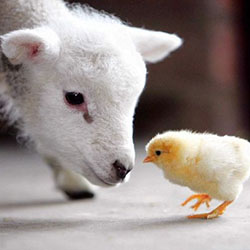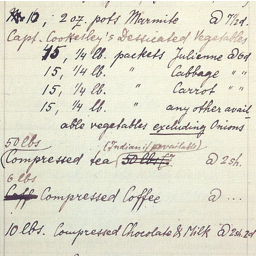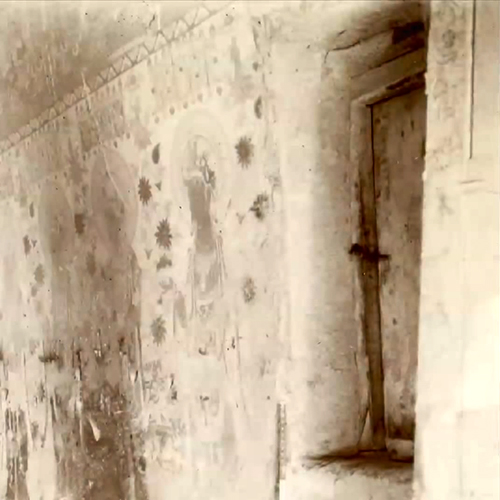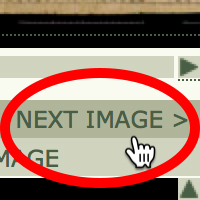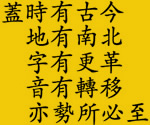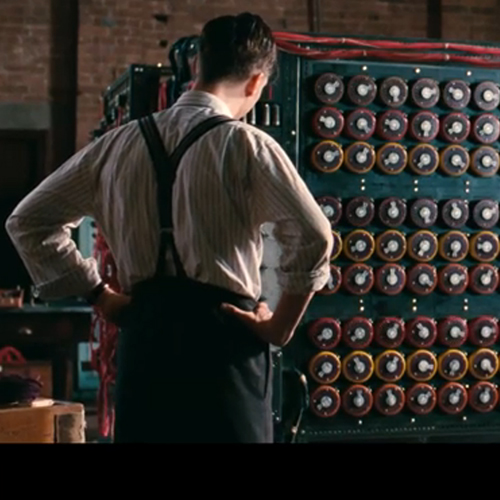Sessions
Block 3
 Intro / Speaking and writing in China
Intro / Speaking and writing in China
Language is communicated through sound waves, and writing is a visual medium. How do they match?
When language is put to writing, some elements from speech are preserved and some are lost. Also, the visual signal will contain elements which were absent in the spoken original.
In Chinese linguistics, the majority of our sources are written in Chinese characters. In this first session, therefore, we will explore how language comes to us through the Chinese script.
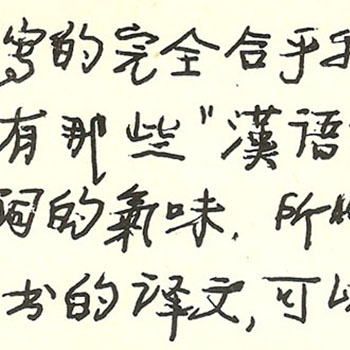 Texts
Texts
-
Chao (1980)
趙元任 Yuen Ren Chao, 序 "Xù" [Preface]
In: 趙元任 Yuen Ren Chao, 中國話的文法 Zhōngguóhuà de wénfǎ [A grammar of spoken Chinese].
香港 Hong Kong: 中文大學出版社 Chinese University Press, 1980, frontispiece.
Translation of Yuen Ren Chao, A grammar of spoken Chinese.
Berkeley: University of California Press, 1968. Translated by 丁邦新 Pang-Hsin Ting.
 Chao's 序 will be handed out and introduced in class. No preparation is needed for this text.
Chao's 序 will be handed out and introduced in class. No preparation is needed for this text.
-
Norman (1988)
"The Chinese script"
In: Jerry Norman, Chinese.
Cambridge: Cambridge University Press, 1988, Chapter 3 = pp. 58-82.
Norman's work is available from the East Asian Library, on the linguistics handbooks shelves.
Highly recommended: a "must-read" classic. This book is widely available and inexpensive.
– In short: get your own copy!
Study suggestions
Time management: do not underestimate assignment #5 below. It may involve more reference checking than would seem at first glance.
Assignments
![]() Please make sure you prepare your answers to all questions & assignments in writing.
Please make sure you prepare your answers to all questions & assignments in writing.
0. In case you participated in the MA course "Chinese linguistics, the basics" in the previous academic year:
- Check that you still have all the answers for assignments 1 to 7 below.
- Instead of these assignments, locate a copy of
Geoffrey Sampson, Writing systems (preferably the second edition, but the first will do too).
- Read Chapter 9: "A Logographic System: Chinese Writing".
- Bring your questions and reading notes to class.
1. Read the assigned chapter from Jerry Norman's Chinese.
In preparing this text, please check that you are familiar with
Note down any difficulties you may have in reading the text, and bring your notes to class.
technical terms in English and in Mandarin (including the corresponding Chinese characters);
names and dates for dynasties, historical periods and historical figures;
geographical designations.
2. On p. 58, the origins of Chinese characters are outlined.
a. In English, do you know a term for the study of writing systems? And in Mandarin?
b. Can you name (at least) three families of scripts, i.e. writing systems of the world which (as far as we know) developed independently?
c. Is the oracle bone script the undisputed precursor of the modern Chinese character script?
d. Can you name (at least) seven different Sinitic languages?
Please give the English and in Mandarin names for each of these, as well as the Chinese characters (简体 & 繁體) for each name.
e. What is the oldest Sinitic phase which has been reconstructed in phonological detail? Please give (approximate) dates.
f. Is the language encoded by the oracle bone script the undisputed precursor of the modern Sinitic languages?
3. The ideographic notion, i.e. the notion "that Chinese characters in some platonic fashion directly represent ideas rather than specific Chinese words" may be "patently absurd" (pp. 60-61), but it is immensely popular nonetheless.
Find a reference (in print or online) which clearly demonstrates, or is clearly based on, the ideographic notion.
a. From this source, note down one specific statement or claim demonstrating this notion.
b. Formulate a counter-argument against this specific statement or claim, basing yourself (at least in part) on the information in section 3.1.
4. Pages 67-69 introduce the 說文解字.
In one or two sentences, summarize the significance of this work
for the study of the Chinese script; and
for Chinese lexicography.
5. On p. 76, please study Table 3.6 carefully, including the notes on p. 77.
a. Can you read all characters listed in the Table?
For your reference: 國際電腦漢字及異體字知識庫 / International Encoded Han Character and Variants Database.
b. Can you give more recent examples of individual characters created in order to "adapt[..] the traditional script to the modern language" (p. 75)?
6. In note 8 of p. 81, please define the term homophonous in your own words.
7. In note 10 of p. 82, it is noted that "the alternation of words beginning with sh and r in a single phonetic series is unusual".
Find one example of this unusual type of alternation in the traditional character script.
8. In the same note 10, consider the example of ràng 'to allow' again.
Note that "ràng" is italicized, but " 'to allow' " is placed within single quotation marks.
a. In your own words, formulate the difference between these typographical conventions.
Which linguistic units do they represent?
b. Can you list other typographical conventions, representing other linguistic units?
For each unit, give English and Mandarin names, as well as the Chinese characters (简体 & 繁體).
c. Is there also a typographical convention which represents items as orthographic units, i.e. as the written forms of a script?
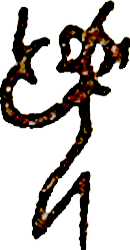 Corresponding with Heaven: The early scribes
Corresponding with Heaven: The early scribes
At the dawn of history, humans were fully modern in the anatomical and in the neurological sense. Their brains and their languages were as complex and as diverse as they are today. There were just fewer speakers.
Even at this early stage, the world must have been teeming with linguists. We know nothing about their theories, but their legacy remains with us today, for they created the first writing systems.
The art of writing was invented more than once, and the puzzle how to represent sound and meaning in graphs has been solved in very different ways. The Chinese case offers us a rare insight in the tenacity of some cultural artefacts.
This week, we will:
study the material culture which produced a script whose characteristics have survived into the digital age;
consider the challenges of interdisciplinary studies; and
learn how to introduce a text dating back more than three millennia to a modern audience.
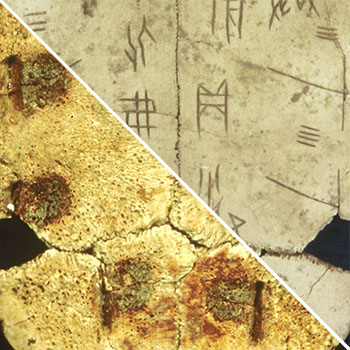 |
Click left \ right to enlarge Source: Lindqvist, China: Empire of living symbols (2008) |
Texts
-
Keightley (1985)
-
Preamble ["Puk!"]
-
Chapter 1, "Shang divination procedures"
-
Chapter 2, "The divination inscriptions"
David N. Keightley, Sources of Shang history: The oracle-bone inscriptions of bronze age China.
First edition 1978; paperback edition, with corrections, Berkeley: University of California Press, 1985.
Pp. 1-2 (Preamble), 3-27 (Chapter 1), 28-56 (Chapter 2).
 For Chapters 1 and 2, your reading assignment does not include the copious footnotes (which take up >50% of the text).
For Chapters 1 and 2, your reading assignment does not include the copious footnotes (which take up >50% of the text).
East Asian Library code: SINOL. 12 G 9.
Available in the Leiden East Asian Library: see teachers' shelves.
-
-
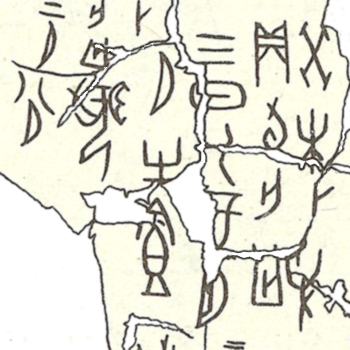 Lǐ 1989
Lǐ 1989"月㞢食"
李圃 Lí Pǔ, selection and commentary, 甲骨文選注 Jiágǔwén xuǎn zhù [Oracle bone writing: An annotated anthology].
上海 Shanghai: 古籍出版社 Gǔjí Chūbǎnshè, 1989, pp. 1-8.
East Asian Library code: SINOL. 2086.6.60.
Available in the Leiden East Asian Library: see teachers' shelves.
Background
-
Djamouri (1992)
Redouane Djamouri, "Un emploi particulier de you (有) en chinois archaïque"
Cahiers de Linguistique Asie Orientale, January 1992, Volume 21(2), pp. 231-289.
Available in the Leiden East Asian Library: see teachers' shelves.
A PDF of this article is also available online at Persée.
-
Thurston (1994)
Hugh Thurston, "The Chinese"
In: Hugh Thurston, Early astronomy. New York: Springer, 1994, pp. 84-109.
Leiden University Library code: GORLAE ASTRON QB016 203.
-
NASA (2011)
NASA Goddard Space Flight Center, "Lunar eclipse essentials"
Uploaded to Youtube on 8 June 2011.
Reading notes
9. In case you need help with the Wade-Giles spelling:
– for systematic guidelines & conversion, see Appendix D in A grammar of Mandarin; or
– for ad-hoc conversion, see e.g. the Chinese Text Project's transcription-conversion tool.
10. In case you need help with the sexagenary cycle:
– for systematic guidelines & conversion, see Tables 9.3 & 9.4 in A grammar of Mandarin; or
– for ad-hoc conversion, see e.g. Wikipedia's Stem, Branch and Stem-Branch tables.
11. "Wu Ting's reign" (Keightley 1985: 1):
Wikipedia has a list of Shang Kings.
Assignments
– Keightley (1985):
12. Read the assigned texts from David Keightley's Sources.
In preparing this text, please check that you are familiar with
- technical terms in English and in Mandarin, including the corresponding Chinese characters,
– e.g. "hsin-wei, eighth day of the week";- names and dates for dynasties, historical periods and historical figures
– e.g. "Wu Ting";
- geographical designations
– e.g. "the powerful Ho".
For hints and suggestions, please consult the Reading notes.
Note down any difficulties you may have in reading the text, and bring your notes to class.
13. In the illustration above, the left bottom half shows the inner side of an oracle bone, and the top right half shows the outer surface of the same shell.
Either half is clickable to show a full view.
In these photos, please identify the "series of hollows" (Keightley 1985: 18) and "the characteristic pu 卜-shaped crack" (ibid.).
14. On p. 50, it is explained that "[a]s a rule, the inscriptions appear to have been carved above, or to the side of, the pu cracks and on the side of the crack which lacked the transverse branch".
Can you confirm this general rule for our "月㞢食" text?
– Lǐ (1989):
15. On the basis of 李圃 Lí Pǔ's helpful notes, read and prepare an English translation of the oracle bone text "月㞢食".
Please note down any difficulties encountered in Lǐ's commentary.
16. Oracular text, line 4, character 2:
In your own words, define the relationship between the character 㞢 and the character 有.
You should minimally formulate what you know on the basis of Pǔ's comments, combined with your own experience.
In this connection, also compare the comments on character adaptations from our first session.
For more background, you may consult Djamouri (1992).
17. Like all historical Chinese styles of writing, the oracle bone script has remained in use in calligraphic traditions up to this day.
This modern calligraphy (click to enlarge)
combines Oracle Bone writing (甲骨文 jiágǔwén) and Running Script (行書 xíngshū), showing this week's ""月㞢食" text in both styles.
Can you tell when this scroll was created?
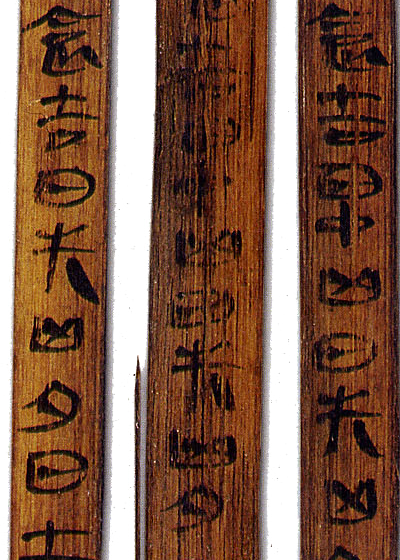 Doing right by a script: The tools of lexicography
Doing right by a script: The tools of lexicography
Last week, we saw how the invention of writing was embedded in technological and economic change.
This week, we will explore early advances in Chinese lexicography against the backdrop of philosophical and political developments In Qín 秦 and Hàn 漢 times.
Texts
-
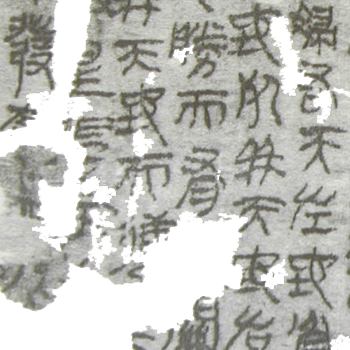 Galambos (2006)
Galambos (2006) -
"Shuowen Jiezi"
Chapter Two, "The Qin and Han creation of the standard"
Imre Galambos, Orthography of early Chinese writing: Evidence from newly excavated manuscripts, pp. 31-63.
Budapest: Eötvös Loránd University, Department of East Asian Studies, 2006.
East Asian Library code: SINOL. 59 C 11.
Available in the Leiden East Asian Library: see teachers' shelves.
A PDF of this book is also available online on Imre Galambos' page
....or use the direct link to this title.
From Wikipedia: The free encyclopedia
 |
Source: Archive.org |
-
許 Xǔ (100)
許慎 Xǔ Shèn, 說文解字 Shuō wén jiě zì [Discussion of simple characters and analysis of complex characters]
Edition: 说文解字: 附检字 Shuō wén jiě zì: Fù jiǎn zì [Discussion of simple characters and analysis of complex characters: With a character index].
北京 Peking: 中華書局 Zhōnghuá shūjú, 1963.
East Asian Library number: SINOL. 5093
Available in the Leiden East Asian Library: see teachers' shelves.
Assignments
Hand-in Assignment #1
Imagine that:
- the five fragments pieced together to form last week's oracle bone were shown in a museum exhibition, and
- you were asked to write the accompanying object label, intended for an English-speaking museum audience.
On the basis of your work for last week's assignments, prepare a text which could serve as that object label. This text should minimally include:
- information about the age and the provenance of the object;
- short remarks about the type of text and the language of the inscription;
- a full translation of the "月㞢食" text.
Hand in your work, printed on paper, at the beginning of class on 22 February, or in my pigeonhole beforehand.
Please note the format requirements.
Small is beautiful: maximally one page (A4).
18. Individual items
Tim: Your backlog assignments for week 3 (##12-17) are due next Friday, 19 Feb 15, at 2:00pm.
Please note the format requirements for written assignments.
The assignments for this week's Lexicography session are below.
A friendly reminder: make sure to prepare all your answers in writing!
- Galambos' Chapter Two, "The Qin and Han creation of the standard" and
- the Wikipedia article "Shuowen Jiezi".
Note down any difficulties you may encounter in these two texts, and bring your notes to class.
20. The third title is a modern reprint of the 說文解字.
(a) Have a good look at this book, which is currently available from the teachers' shelves in the Leiden East Asian Library.
(b) Check that you understand how the work is organised.
(c) Find the characters
,
,
and
in this dictionary.
For each of these four characters, write down
- the page number for the entry in this modern edition
- the Shuō wén jiě zì radical
- the dictionary's definition of the characters, and
- an English translation of this definition
21. Check if you can find a complete edition of the 說文解字 online.
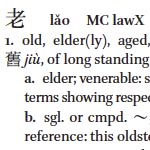 FYI
FYI
Talking about lexicography, Brill published this dictionary last year:
Paul W. Kroll, A Student's Dictionary of Classical and Medieval Chinese
Publication: Leiden: Brill, 2015, xvi + 714 pp., ISBN: 9789004283657
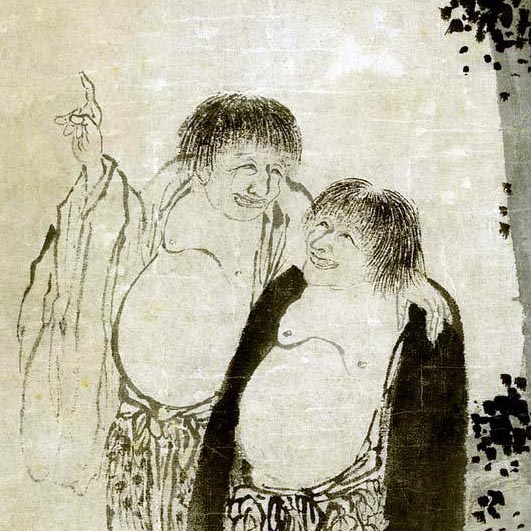 Mapping the sounds: Time travel in phonology
Mapping the sounds: Time travel in phonology
In the first three weeks, we looked at the division of labor between language and script in linguistic research. Since the spoken and the written word are easily – and often unwittingly – confused, the written word can be the curse of synchronic work.
But in the diachronic study of language, written words are a true blessing. The farther we look back, the more we have to rely on writing as the sole surviving witness of utterances which are no longer audible. And in the Chinese case, these blessings are plentiful.
This week we look at recent work in phonological reconstruction. The main challenge of this field: to figure out what the earliest forms of Chinese sounded like.
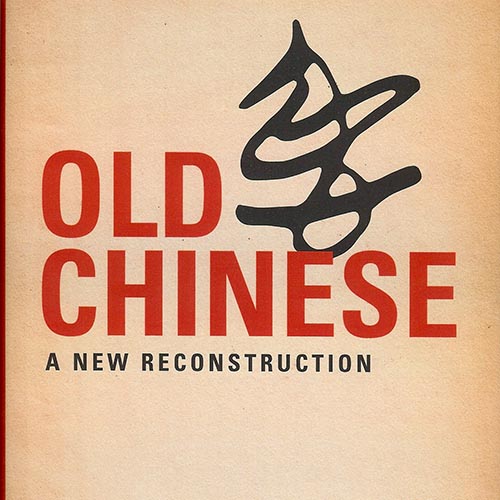 Texts
Texts
-
Baxter & Sagart (2014)
"Introduction" & "The evidence for Old Chinese"
William H. Baxter and Laurent Sagart, Old Chinese: A new reconstruction
Oxford: Oxford University Press, 2014.
- "Introduction" = Chapter 1, pp. 1-8
- "The evidence for Old Chinese" = Chapter 2, pp. 9-41
This work is available as an online full-text edition in the Leiden University Library.
The "companion document giving proposed reconstructions for over 4,000 individual Old Chinese lexical items" mentioned on p. 1 is available online under the following title:
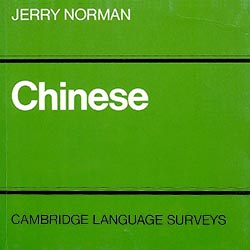
-
Norman (1988)
"The historical phonology of Chinese"
Jerry Norman, Chinese.
Cambridge: Cambridge University Press, 1988, Chapter 2 = pp. 23-57.
Norman's work can be found in East Asian Library, on the linguistics handbooks shelves.
 Reminder: do get your own copy!
Reminder: do get your own copy!
Background
-
A general understanding of the comparative method is assumed in these two texts – and in this session of your course.
-
An overview of the Sino-Tibetan family of languages can be found on Ethnologue.
-
Baxter (1992)
-
Scharfe (1977)
"The origins" = Chapter I of Hartmut Scharfe, Grammatical literature.
"Introduction" = Chapter 1 of A handbook of Old Chinese phonology.
Berlin: Mouton de Gruyter, 1992, pp. 1-26.
Leiden University East Asian Library number: SINOL. 23 A 3
Jan Gonda, ed., A history of Indian literature, Volume V, Part II, Fascicle 2, pp. 77-87.
Wiesbaden: Otto Harrossowitz, 1977.
Assignments
22. As discussed in class, please email me your solution(s) for assignment 21.
23. Familiarize yourself with the variety of transcription systems for Mandarin.
Check all systematic differences, and make sure you can use each system at least passively.
For some references, see § 2.1 and Appendix D of A grammar of Mandarin (East Asian Library, on the linguistics handbooks shelves).
- We discussed Hànyǔ Pīnyīn and Wade-Giles in class.
Also compare assignment 9.
- Also read up on some other major systems of the last century:
Guoyeu Romatzyh, Yale, 注音符號.
24. Note down any difficulties you may encounter in these two texts, and bring your notes to class.
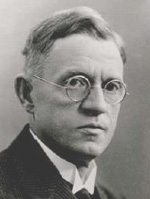 – Norman (1988):
– Norman (1988):
25. On p. 23, Norman mentions early work by Bernard Karlgren.
(a) Check which other works by Karlgren are available at the Leiden University Library.
(b) What is Karlgren's Chinese name?
26. The 反切 fǎnqiè system is explained on pp. 27-28.
27. The development of tone is explained in section 2.7 (pp. 52-57) and summarized in Table 2.12.Some historical background is given in Hartmut Scharfe's "The origins".
Now imagine that you are explaining this notation system to someone who is interested to know how it works, but does not know any Chinese language.
Make your explanation as short and concrete as possible:
maximally four sentences, and based on one concrete example.
(a) Check that you understand all Chinese terminology.
(b) For a Chinese language of your choice, check the correspondes between its tones and the system shown in Table 2.12.
– Baxter & Sagart (2014):
28. Check which other works by William Baxter and Laurent Sagart are available at the Leiden University Library.
29. As you see in this week's Background references, Baxter produced a comprehensive and well-referenced reconstruction of Old Chinese in 1992.
On the basis of your reading of Chapters 1 and 2 of Old Chinese: A new reconstruction, explain in your own words what motivated the publication of a new reconstruction in 2014.
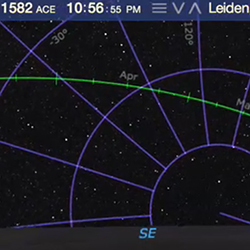
Development notes: For future runs of this course
- Here is a short explanation of the Julian-to-Gregorian calendar switch.
You can watch the disappearance of 11 days on an October night at Leiden in this visualization by Starry Night Pro Plus.
- Can you explain the logo of the book?
- Baxter & Sagart (2014): read smaller sections?
- S.H. Schaank, "Ancient Chinese phonetics"
- Facsimile edition in the Chinese Text Project Library:
ʼ"T'oung Pao A 8 (1897), 361-77, 457-86. Continued in T'oung Pao A 9 (1898), 28-57. Supplementary note in T'oung Pao 3 (1902), 106-8."
– quoted from P.N. Kuiper, The early Dutch sinologists: A study of their training in Holland and China and their functions in the Netherlands Indies (1854-1900).
PhD thesis, Leiden University, 2016.
Part II, p. 735, note 308.
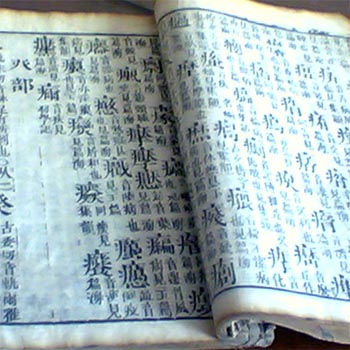 Probing the meanings of yore: The xùngǔ tradition
Probing the meanings of yore: The xùngǔ tradition
We have surveyed the three pillars of traditional Chinese linguistics: character etymology, lexicography and phonology.
Together, they constitute the foundation for mainstream Chinese philology, or xùngǔ 訓詁.
This week we examine the integration of semantics within this discipline, and look at the sometimes precarious position of the study of meaning.
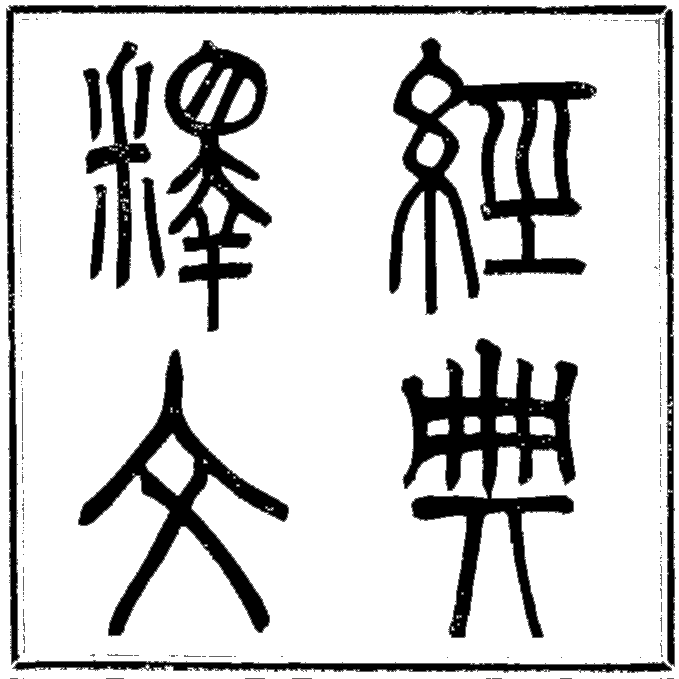 Texts
Texts
-
Encyclopedia (1988)
經典釋文 "Jīng diǎn shì wén"
中国大百科全书 • 语言文字 Zhōngguó dà bǎikēquánshū: Yǔyán wénzì [The Chinese encyclopedia: Language and writing].
北京 • 上海 Peking/Shanghai, 中国大百科全书出版社 Zhōngguó Dà Bǎikēquánshū Chūbǎnshè, 1988, pp. 231-232.
Leiden University East Asian Library number: SINOL. Ref.9302.4/10.
-
 Pān (1992)
Pān (1992) 潘悟云 Pān Wùyún, 陆德名(约公元550-630年) "Lù Démíng (yuē gōngyuán 550-630 nián)" [Lù Démíng, ca. 550-630 AD]
濮之珍 Pú Zhīzhēn, 中国历代语言学家评传 Zhōngguó lìdài yǔyánxuējiā píngzhuàn [Biographies and assessments of Chinese linguists through the ages].
上海 Shanghai: 复旦大学出版社 Fùdàn Dàxué Chūbǎnshè, 1992, pp. 131-136.
Leiden University East Asian Library number: SINOL. 5067.4.
Assignments
30. Individually (see previous Blackboard Announcement for email adresses)
- Tim: Consult your peers for help with the Chinese texts.
If you need any extra help, please let me know in time!
- Anton, Bingcun, Jiashuo, Rickard, Yingshi: Please check with Tim if he needs assistance with his reading in this session.
Bingcun, Jiashuo, Yingshi: may I appeal especially to the three of you?
– since as native readers, you will need less time preparing for this week's texts.
31. This week, we are back to close reading. In class, we will discuss both texts page by page.
Note down any difficulties you encounter in these two texts, and bring your notes to class.
In particular, pay attention to:
- Technical vocabulary
- Classical Chinese phrases
- Titles of works quoted in these texts
You do not need to write out full translations of these texts, but you should be prepared to interpret them viva voce in class.
– Encyclopedia (1988):
32. At the bottom of p. 231, we read how Lù Démíng broke with a philological tradition in his Jīng diǎn shì wén; and how, in its turn, a revolution became a convention.
Describe this turn of events in your own words: maximally three sentences.
33. In cauda venenum: the final paragraph describes how later editions of the Jīng diǎn shì wén dealt with Lù's intentions.
Again, describe this turn of events in your own words. Maximally two sentences.
– Pān (1992):
34. Why does this modern text start out in Classical Chinese? What would be the likely source for this opening passage?
35. Check the 合计 mentioned in the first line of p. 133 and correct the error.
36. For the character 臡, first mentioned on p. 134, find the origal 經典釋文 text for first of the six references listed on p. 135.
Suggestions & hints
Online text editions can be found e.g in the Chinese Text Project:
- The "Title search" box is in the bottom left-hand corner.
- Try "經典釋文" and find a facsimile edition.
37. Don't forget to do some preparatory work on your term paper.
Make a list of possible topics and research questions, and bring your plans and ideas to class.
Block 4
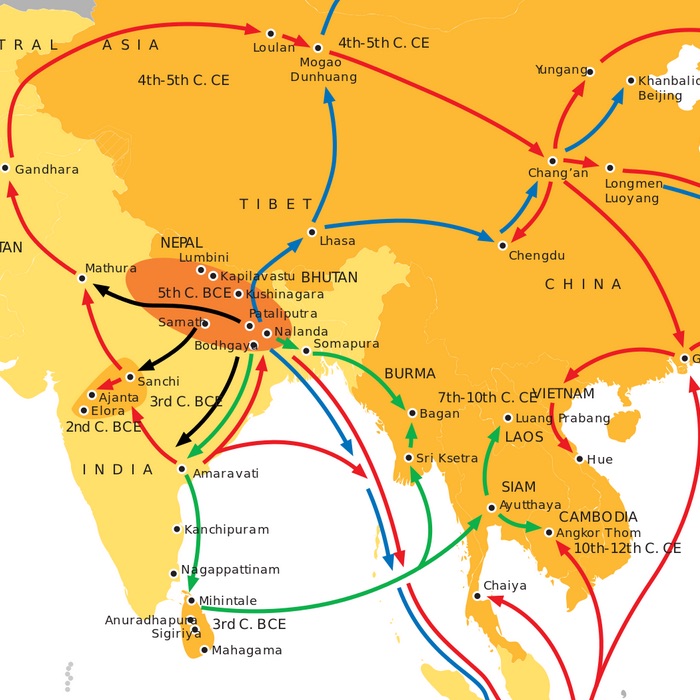 Alien inspiration: South and west
Alien inspiration: South and west
Throughout human history, contacts between China and the Indian sub-continent were maintained through the caravan routes in Central Asia, circumventing the Himalayas, and providing long-distance trade and cultural exchange.
The early spread of Buddhism from India lead to a flurry of translation activities in China, supervised by missionaries familiar with Indian phonology, morphology and syntax.
This week, we will discover how classical Indian grammar studies influenced linguistic traditions along the Silk Road network – and beyond.
In addition, you will present the subject of your term paper to an interested lay audience.
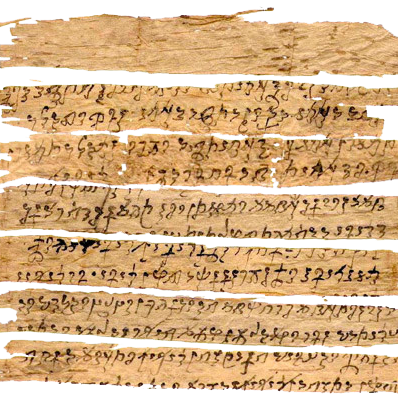 Texts
Texts
-
Zürcher (1977)
"Late Han vernacular elements in the earliest Buddhist translations"
- Original: Journal of Chinese Language Teachers Association 12, 1977, pp. 177–203.
Available in the Leiden East Asian Library: see teachers' shelves.
- Reprint: in Jonathan Silk, ed., Buddhism in China: Collected papers of Erik Zürcher. Leiden: Brill, 2013, pp. 27-61.
The Leiden University Library offers online access for the Reprint edition.
In class, all page references are to the latter Reprint.
"Response to Trautmann"
Web edition: Fragments: Interdisciplinary approaches to the study of ancient and medieval pasts. Ann Arbor: University of Michigan. Volume 1, 2011, pp. 21-30.
- PDF edition: weblink.
Both editions are available online from the University of Michigan's University Library.
In class, all page references are to the PDF edition.
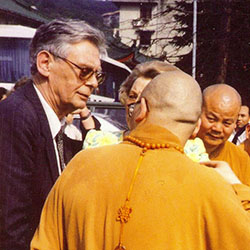 Background
Background
-
"Erik Zürcher"
From Wikipedia: The free encyclopedia
-
Itkonen (1991)
-
Scharfe (1977)
"The origins" = Chapter I
-
Silk Road transmission of Buddism
From Wikipedia: The free encyclopedia
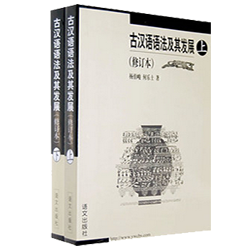
"India" = Chapter 2
Esa Etkonen, Universal history of linguistics: India, China, Arabia, Europe.
Amsterdam: John Benjamins, 1991, pp. 5-87.
Hartmut Scharfe, Grammatical literature.
Jan Gonda, ed., A history of Indian literature, Volume V, Part II, Fascicle 2, pp. 77-87
Wiesbaden: Otto Harrossowitz, 1977.
-
SuttaCentral
Early Buddhist texts, translations, and parallels
-
Yáng & Hé (2001)
杨伯峻 Yáng Bójùn and 何乐士 Hé Lèshì
古汉语语法及其发展(修订本) Gǔ Hànyǔ yúfǎ jí qí fāzhǎn (xiūdìngběn) [Early Chinese grammar and its development: Revised edition].
北京 Beijing: 语文出版社 Yǔwén Chūbǎnshè, 2001
Available in the Leiden East Asian Library: see teachers' shelves.
Reading notes
– to Zürcher (1977):
-
In the left-hand margins of the 2013 Reprint edition, the numbers in square brackets are page references to the original (1977) article.
-
The Reprint edition copies the original, but Wade-Giles transcriptions have been converted to Pinyin.
-
As the mainstay of this article, Zürcher offers a wealth of Chinese text examples.
In your reading, make sure to evaluate each example carefully, including its English translation.
- In linguistic usage, the term prosodic usually refers to the use of
pitch (high/low), volume (loud/soft) and tempo (slow/fast)
to express broadly applicable modal meanings such as interrogativity, hesitation, emphasis and anger.
In this article, the same term prosodic is used to denote metre, i.e. the rhythm used in pronouncing a line of text.
– to Baxter (2011):
- Baxter's (2011) text was written in response to Trautmann's (2011) article, which appeared in the same volume of the journal Fragments.
Session set-up
Today's session will consist of two parts:
- Oral presentations:
On the subject of your term paper
- Text:
Our usual discussion of the assigned readings
Assignments
Oral Presentation
On 21 March, as announced, a very short oral presentation will be expected of you about the subject of your term paper.
Points of consideration:
- Your presentation will be in English
- Maximum duration is five minutes – please time yourself in preparation!
- Your target audience intelligent and interested, but not necessarily trained in linguistics or in Chinese. Fellow students from other departments may be invited to listen in.
- A short handout for the audience will come in handy, because it will save you time writing on the blackboard (please prepare 5 copies)
- Powerpoints are allowed, but only after prior consulation (over email) – also note that setting up your system will cut into your five minutes!
– Zürcher (1977):
38. Note down any difficulties you encounter in the text, and bring your notes to class.
39. We discussed several historical stages of reconstructed Chinese in class.
a. Give English and Chinese names for at least three of these stages.
b. What is/are the difference(s) between these reconstructions and the actual language spoken at the time?
c. Give approximate geographic locations (ancient & modern names) for the stages you identified in (a) above.
d. Give approximate times (in centuries) for the stages you identified in (a) above.
e. Which reconstructed stage comes closest to the Late Han vernacular discussed here?
40. In two sentences, describe Zürcher's rationale for his scrutiny of Late Han vernacular Chinese (pp. 27-28; also compare p. 31).
41. The linguistic analyses presented here make extensive use of the term binome, but the text provides no definition of this term.
The term first occurs on p. 29. Note its contrastive use on p. 30; and compare note 8 (pp. 32-33).
a. Formulate your definition of binome in one sentence, on the basis of your reading of this article.
b. Compare the following terms, and check their definitions if necessary:
binome, character, compound, letter, morpheme, phoneme, pitch, sentence, syllable, tempo, tone, volume, word
In your view, which of these terms are indispensable in linguistic description and analysis?
42. For the purpose of this article, Zürcher discards early Chinese transcriptions of Buddhist technical terms as a primary source of phonological information (p. 32).
One of the reasons for this restriction is:
"(2) the distortion caused by the way in which those terms were pronounced by the foreign missionary (who may have been a Parthian, Khotanese o[r] Sogdian)".
For this type of distortion,
a. formulate your own definition, in strictly linguistic terms; and
b. specify modern examples: at least one for Mandarin to English, and one for English to Mandarin.
43. In your own words, what is meant by "structural" in the "two structural principles" distinguished for the 1,080 cases mentioned on p. 34?
44. On the same page,
a. check what is meant by "determination" in the following structure:
"determination of a 'generic' element B by a preceding semantically more specific element A"
– also compare the use of "determinative" on p. 37; and a (very) different use on p. 44.
b. check how this principle applies for the examples listed in the text: 搖動, 傾動, 轉動, 發動, 移動, 感動.
45. The meaning of 一切 is discussed on pp. 37-38.
a. What historical meanings of 一 and 切 can be assumed?
Explain the semantic shift from these original meanings to 'momentary' (note 16), and to 'all'.
Your explanation will gain in plausibility if you can point out similar developments from (genetically) non-related languages.
b. On p. 38, compare the examples under (c) with the example given on p. 35:
自身所有好物 'the beautiful things in his possession'
Is it possible (or likely?) that 自身所有好物 was used to mean 'all his beautiful things' in the Late Han Luòyáng vernacular?
c. How can we check when and where the semantic shift(s) of 所有 from 'which is in one's possession' to 'all' occurred?
46. A variety of pronominal suffixes are analysed as "plural and generic forms" on pp. 42-43.
In note 24, we read that "in most cases, and especially when affixed to personal pronouns, they merely serve to mark the plural".
Please comment.
47. On pp. 43-44, the same "plural and generic suffixes" appear with demonstrative 是 'that'.
Do you agree with the analysis in terms of suffixes?
If so, indicate why. If not, provide an alternative.
48. The section on 而, 於 and 者 (pp. 50-54) shows functions falling into disuse as well as a new functions.
On pp. 53-54 "two new functions" are listed for 者. Can you describe these two new meanings in two or three words?
49. As Zürcher points out, there are considerable differences between his own results and the descriptions of Late-Han Chinese byDobson (1964), Ushujima (1971) and others.
Please make an educated guess about the reason for these differences.
In your reply, also consider the final statement of this article (p. 60).
– Baxter (2011):
50. Note down any difficulties you encounter in the text, and bring your notes to class.
51. In Figure 1, pick one horizontal line of your choice which meets the following condition:
on both pages of the 韻鏡 manuscript, left and right, it lists minimally four characters.
a. For each of the characters in this line, check for Middle Chinese and Old Chinese readings according to the Baxter-Sagart reconstruction of Old Chinese .
b. What is the function of the large white-on-black character to the left of your line?
And what is the function of the circles in your line?
(In case of doubt, check the texts and backgrounds of Week 5).
c. Your line of characters is divided into six sections.
As Baxter indicates, the order of these sections is "strikingly like that of the Brahmi alphabet" (Response, p. 21).
An overview of the Brāhmī alphabet, with IPA equivalents, can be found at Omniglot.
This script has a long history in China. Here is a sample from a tenth-century Chinese - Khotanese phrasebook discovered at Dūnhuáng.
Now, check Baxter's claim against your line of characters, and provide modern phonetic terms for these sections.
52. On p. 29, we read that Pāṇini's original sūtras "resemble low-level computer language".
In what way?
53. Baxter's account of Pāṇini's influence on Chinese phonology (pp. 21-23) serves as a backdrop for his evaluation of Indian theoretical contributions to European and American linguistics (pp. 23-30) .
Please summarize that evaluation in two sentences.
No class today
Easter Monday
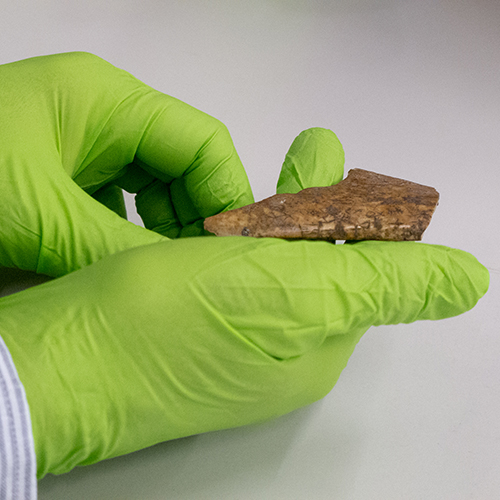 Museum excursion: The material culture of the character script
Museum excursion: The material culture of the character script
Monday 4 April 2016
Today Dr. Oliver Moore will receive us at the
Museum Volkenkunde
Note today's time & venue:
Time: we meet at 15:00pm
Venue: Main entrance, Museum Volkenkunde, Steenstraat 1, 2312 BS Leiden
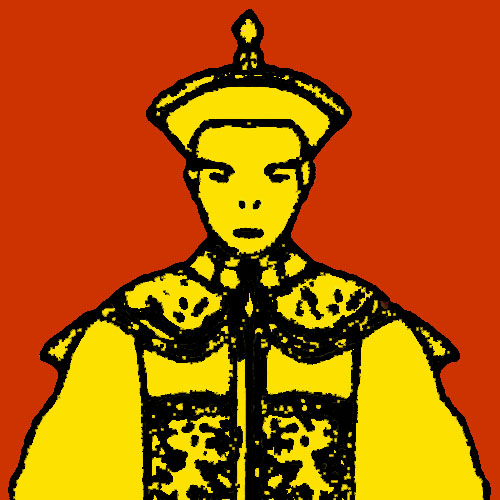 Bureaucrats talking: The emergence of Mandarin
Bureaucrats talking: The emergence of Mandarin
At the start of Block 4, our tour of the classical period ended with an early example of cross-cultural linguistic influences. The remainder of Block 4 deals with pre-modern and modern developments.
Some early records of this period belong to another wave of cross-cultural exchange, mediated by European missionaries in Asia.
This week, we focus on the emergence of the language which was to shape our modern image of Chinese: the vernacular of the Mandarins, China's imperial officialdom.
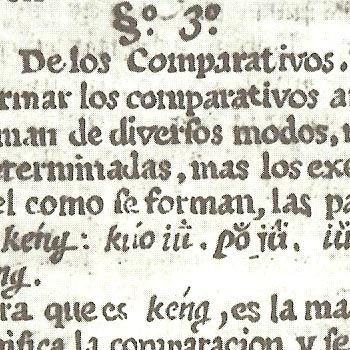 Text
Text
Coblin (2000)
W. South Coblin, "A brief history of Mandarin"
In: Journal of the American Oriental Society
Volume 120, no. 4, 2000, pp. 537-552.
Available online at the Leiden University Library.
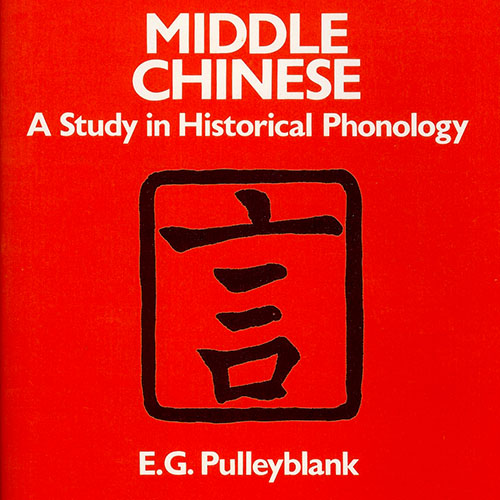 Background
Background
Pulleyblank (1984)
"The history of 'standard Chinese' "
"The phonology of Pekingese"
In: Edwin Pulleyblank, Middle Chinese
Vancouver: Universiy of British Columbia Press, 1984.
- "The history of 'standard Chinese'" = pp. 1-4
- "The evidence for Old Chinese" = Chapter 2, pp. 41-59
Available from the East Asian Library, on the linguistics handbooks shelves.
Assignments
Tim: be prepared to deliver your oral presentation (week 1)
As always, prepare your answers to all questions & assignments in writing.
Page numbers followed by a slash and the letter L or R (e.g. "p. 537/L") indicate the left or right column on the page.
54. Check your progress with the term paper, and bring any questions to class.
55. Be sure to identify and look up linguistic terms as well as historical names and events you are unfamiliar with, and/or to brush up your knowledge on these items.
56. Provide your own English translations for each of the book titles mentioned on p. 537/R.
In the remainder of the article, keep checking that you understand the titles of all works discussed.
57. As mentioned in Four tones (Chinese), the 入 rù tone (p. 538/L) is labeled as "entering AKA checked" in English.
Consult your notes from Block 3. In two sentences, summarize the etymology of the Chinese term and the source of the English labels.
58. Please summarize the conclusion at the bottom of p. 538/R in your own words.
59. On p. 540/L, the Arte de la lengua mandarina and Vocabulario de la lengua mandarina by Francisco Varo are mentioned.
Check if modern editions of both these works are available – and if so, who are the editor(s).
60. On p. 542/R, it is explained that "the zhèngyīn system of ca. 1450 was based not on the pronunciation of a single dialect or area but was instead a composite entity".
(a) What could be the reason that a purported linguistic standard is in fact composite in nature?
(b) Cite both advantages and drawbacks of a standard of this nature for its speakers;
and for linguists of later generations.
(c) Can you cite other (historical and/or modern) examples of composite linguistic standards in China?
61. As noted on p. 543/L, Jiǎng Shàoyú 蔣紹愚 has pointed out that for historical stages of Chinese, "spoken material has [...] been accessible only indirectly through the medium of the literary sources".
(a) Please paraphrase this statement in your own words, and/or give an example.
(b) Compare this state of affairs with the status of spoken materials in the description of the modern standard language as it arose in the twentieth century.
What sources for spoken Mandarin were linguists using in, say, the 1950s?
62. Please give a (short!) summary of the etymology of the modern perfective particle le as described on p. 548.
63. In the short abstract of this article (p. 537), it is explained that the text exposes a "flawed" view about the provenance of standard Mandarin.
In linguistics as in any other branch of scientific research, flawed views are problematic only inasfar they cannot be falsified; otherwise, their very falsification helps science progress.
(a) Is there a difference in meaning between the terms
standard Mandarin as used here ("in its oldest sense", p. 537/L);
standard Chinese as used by Pulleyblank (1984: 1); and
Modern Chinese?
If so: please indicate the difference(s).
And if not: check if these terms differ in other way (e.g. style, user base, varieties of English)?
(b) Give examples of flawed views in the field of language reconstruction (not necessarily Chinese) which have since been falsified.
(c) Give examples of views in linguistics which cannot be falsified.
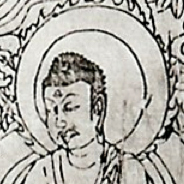
| "By far the largest corpus of early Chinese manuscripts available to us today is the huge cache found by Sir Aurel Stein and others at Dunhuang in far western China in the early years of the twentieth century." Peter Kornicki, "Bluffing your way in Chinese" (2008: 2) |
Diamonds from Sand City: Dūnhuáng's linguistic treasures
In week 1 of Block 4, we saw how the desert trails connecting India with China were busily travelled by merchants and monks, artists and adventurers.
This week, we zoom in on the oasis town of Dūnhuáng 敦煌, a.k.a. 沙州 Shāzhōu 'Sand City', whose Mògāo 莫高 caves has been a Unesco World Heritage Site since 1987.
One of the first scholars who realized that this site harbored a priceless linguistic time capsule was the Hungarian-born Briton Stein Márk Aurél, later Sir Marc Aurel Stein (1862-1943).
Initially attracted to Dūnhuáng by its Buddhist art, Stein chanced upon a cave full of manuscripts and prints in 1907. Today, the study of Dūnhuáng documents remains a fascinating multi-disciplinary field.
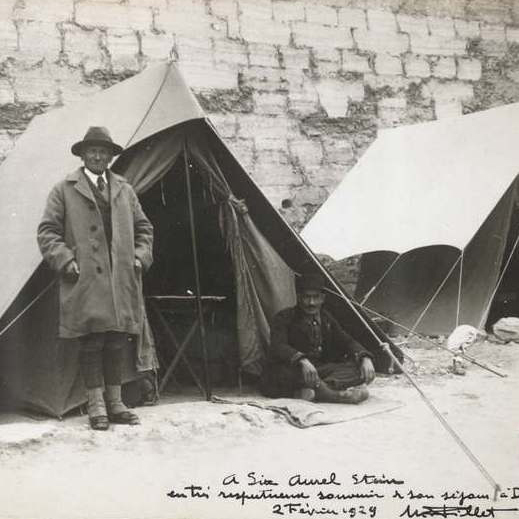 Text and audio
Text and audio
-
Whitfield (2009)
Susan Whitfield, "Stein's Silk Road legacy revisited".
In: Asian Affairs, Volume 40, no. 2, 2009, pp. 224-242.
Available online at the Leiden University Library.
-
Fāng (2014)
方廣錩 Fāng Guǎngchāng, "敦煌遺書數字化的現狀, 基本思路, 目前實踐及設想 / Status, basic concepts, current practice and tentative plan for the digitization of Dunhuang manuscripts"
Opening keynote lecture, 6 September 2014, of the "Prospects for the study of Dunhuang manuscripts: The next 20 years" Conference held at Princeton University.
For a local copy of this lecture, click "Download video" inside the web-player window.
Note, however, that the recording has audio only.
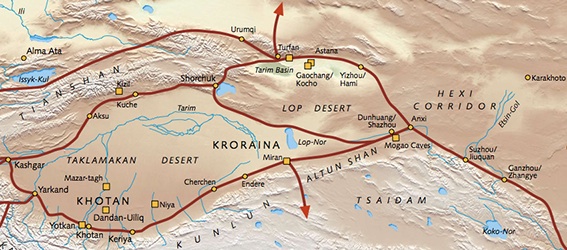
Reading notes
Whitfield (2009):
64. The map shown on p. 225 is available online as a scalable color map from the British Library.
Background
-
Stein (1921)
Volume II, Texts
Volume IV, Plates
Aurel Stein, K.C.I.E., Serindia: Detailed report of explorations in Central Asia and westernmost China
Oxford: Clarendon, 1921.
Available in the Leiden East Asian Library: see teachers' shelves.
Susan Whitfield, Aurel Stein on the Silk Road
London: British Museum Press, 2004.
Published at the occasion of the British Library exhibition "The silk road: Trade, travel, war and faith".
Includes a glossary.
Available in the Leiden East Asian Library: see teachers' shelves.
International Dunhuang Project, "Conservation of the Diamond Sutra".
Uploaded on Youtube on 27 May 2009.
Fascinating footage on the multi-disciplinary challenges of preserving the world's oldest dated printed text.
More video's from the IDP are available at their Youtube channel
Peter Kornicki, "Bluffing your way in Chinese".
Sandars Lectures in Bibliography,
Cambridge University Library, 11 March 2008.
Assignments
Hand-in Assignment #2
Write a preliminary version of your term paper. Hand it in, printed on paper, at the beginning of class on 18 April, or in my pigeonhole beforehand.
Please note the format format requirements.
- Maximum length: 4 sheets A4
- Please do not not write text about your paper, but text for your paper
As discussed in class: during term, you can hand in as many draft versions as you like.
The more versions you hand in, the more feedback you will receive.
65. Individual items
Anton: Aurel Stein was not only a trained philologist, but also a skilled archeologist, "recognizing the importance of careful excavation, of stratigraphy and of recording each find's location" (Whitfield 2004: 18).
In two or three sentences, describe the technique of stratigraphy. When did this technique originate?
Bingcong: Among the Dunhuang manuscripts, there are detailed drawings of hands held in many different positions.
(a) Find one of these drawings in Stein's Volume IV: Plates.
(b) Do they depict hand positions or hand gestures? What was the purpose of such drawings?
Jiashuo: Stein's Volume II: Text notices that the sutra scroll was "in excellent preservation and complete".
Elaborate conservation was undertaken in the years 2003-2010, as shown in a British Library video on the Conservation of the Diamond Sutra.
Now, compare Stein's original picture with the photo taken at the British Museum in the mid-1970s.
Can you point out what type(s) of restoration or conservation work had been performed by that time?
Rickard: There is a short Chinese text preceding the translation of the Diamond Sutra itself.
What does the first line say?
Tim: What is the Chinese term for 'archeology'? And what does it literally mean – morpheme by morpheme?
66. Read Whitfield (2009) and bring your reading notes to class.
67. Make a list of all language names mentioned in this text, restricting yourself to languages spoken natively in the areas explored by Stein.
For each of these languages, look up their genetic affiliation (language family, subgroup, branch etc).
For some assistance, try the Linguistic Toolbox at the bottom of this page.
68. Listen to Fāng's (2014) keynote speech and bring your listening notes to class.
69. In two or three sentences, summarize what Fāng considers to be the major challenge(s) for the digitization of Dunhuang manuscripts today.
70. Two volumes of Aurel Stein's original work of 1921 are available in the EAL (teachers' shelves).
First, have a good look at these works.
In Volume IV: Plates, check that you understand the page numbering system.
On page C of Volume IV: Plates, find the photo of the "printed roll" at the lower half of the page;
on the same page, find Stein's inventory number for this item;
and in Volume II: Text, under the same inventory number, find Stein's detailed description of the item.
Now, establish whether Stein himself realized the historical significance of this particular scroll.
71. The International Dunhuang Project (IDP) has uploaded a high-resolution image of the same scroll, which contains the full Chinese text of the Diamond Sutra.
This webpage includes a digital facsimile edition of the scroll, along with a full English translation of the sutra.
Sanskrit title: वज्रच्छेदिकाप्रज्ञापारमितासूत्र Vajracchedikā Prajñāpāramitā Sūtra
Chinese title: 金剛般若波羅蜜多經 Jīngāng Bōrěbōluómìduō Jīng (note the Mandarin readings for 般 and 若), abbreviated to 金剛經 Jīngāng Jīng
English title: Diamond-Cutter-of-Perfect-Wisdom Sutra, abbreviated to Diamond Sutra
On the IDP page, if you click on "NEXT IMAGE" once,
you will have reached the last line of the printed text, indicating its date of publication. (to see more details, click "LARGE IMAGE")
This line of text is lacking in the IDP translation, but you will find an English translation in the short but useful introduction to the Diamond Sutra by the Silkroad Foundation.
(a) Correct the Silkroad Foundation's English translation of the Chinese date.
(b) Find the name of the emperor ruling the Táng 唐 at the time of publication of this scroll.
(c) Use the Chinese-Western calendar converter provided by the Academia Sinica, Taiwan, to check if the Julian date give by the Silkroad Foundation is correct.
(d) Check if you can tell on what day of the Julian week this Chinese edition of the Diamond Sutra was published.
 FYI
FYI
T.W.I.S.T.
The 10th T.W.I.S.T. Students' Conference of Linguistics
Date: 22 April 2016
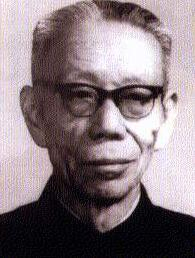
Pride and priorities: Traditions in the study of Chinese
The study of language requires close collaboration with a variety of disciplines. Over the past few weeks, our examples have included archeology, astronomy, literature, philology, art history, geology and religious studies.
These cross-discipline relations vary over time and – perhaps even more so – across cultures and regions. As a consequence, defining the scope and domain of linguistic research has always been subject to widely different assumptions and attitudes.
This week, we reflect on a number of similarities and differences between native and non-native traditions in Chinese linguistics.
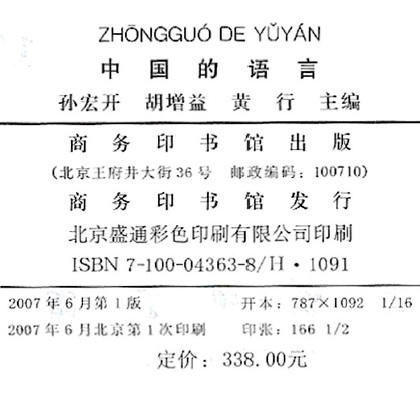 Texts
Texts
-
Xíng (2007)
邢公畹 Xíng Gōngwǎn, 汉语 "Hànyǔ” [Chinese]
In: 孙宏开 Sūn Hóngkāi, 胡增益 Hú Zēngyì, 黄行 Huáng Xíng (eds.), 中国的语言 Zhōngguó de yǔyán [The languages of China].
北京 Peking: 商务印书馆 Shāngwù Yìnshūguǎn, 2007, pp. 108-144.
We will read and discuss only the first 21 pages: pp. 108-128.
Available at the Leiden University Library.
-
Norman (1988)
pp. 181-182 of
Jerry Norman, Chinese. Cambridge: Cambridge University Press, 1988.
East Asian Library: linguistics handbooks shelves.
Reading notes
72. On the meaning of the term 行用 on p. 108 of Sūn e.a. (2007), see this Baidu page.
Assignments
73. Please note down any difficulties you may encounter in these two texts, and bring your notes to class.
– Unless indicated otherwise, all assignments are about Sūn e.a. (2007).
74. Can you spot anything remarkable about the publishing details printed on page ii?
75. How would you characterize the first paragraph of p. 108?
76. On pp. 109-111, tone is established as the main criterion for a division of Sinitic dialect groups. Are other criteria available?
To answer this question, please consult pp. 181-182 of Jerry Norman, Chinese (Cambridge: Cambridge University Press, 1988; on the East Asian Library's handbooks shelves).
77. Are the two tabels on p. 111 given in phonetic or phonemic transcription?
78. Please check carefully if the overview of Peking Mandarin initials, finals and tones on p. 111 is complete.
79. On p. 113, the general lack of "形变" is described for Peking Mandarin.
Can you name a productive morphological process in Peking Mandarin nonetheless?
[Note: check the meaning of productive as a linguistic term]
80. The overview of Cantonese tones on p. 113 (lines 4-6) is followed by a number of examples.
(a) Make an inventory of all the 入声 tones given here. For each of these, please
- give the tonal values according to the five-point scale used in the text;
- cite the example, providing transcription, Chinese character, and English translation;
- try to pronounce the example, and check your pronunciation with a Cantonese speaker.
(b) Please check if all 入声 tones that you can think of are covered in this overview.
- If the answer is yes, please provide your own examples, citing free (not bound) forms only.
- If the answer is no, please write down any missing tones, indicating their tonal values according to the five-point scale used in the text.
81. In note 1 of p. 115, the original table quoted and reproduced here is supplemented by one extra possibility. Can you give more?
82. Please make sure that you understand all technical terms in the section on 六书 on p. 116.
83. On p. 124, please identify 王力 and 俞敏.
84. On p. 126, please identify 陈第.
One of his most famous quotes is shown below. Provide your own English translation.
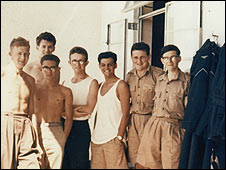 Mandarin blue: Chinese linguists in the Cold War
Mandarin blue: Chinese linguists in the Cold War
On the morning of December 7, 1941, a surprise air attack by Japanese forces on Pearl Harbor, Hawai'i, sparked off American involvement in the Second World War.
Apart from the material challenges, the United States were also confronted with a serious linguistic problem: there was an essential lack of personnel trained in the languages spoken at the Asian front. Substantial federal funds were allocated to remedy this situation.
After the war, army language manuals were converted into university textbooks, and with continued funding, a new and influential generation of oriental linguists arose among the former Allies in the United States, in Russia and in Western Europe.
This week, we will read – and hear – about a Chinese language program initiated by the British army. Between 1951 and 1962, some 300 National Servicemen were enlisted for training in spoken Mandarin and sent out to Hong Kong to perform voice interception work.
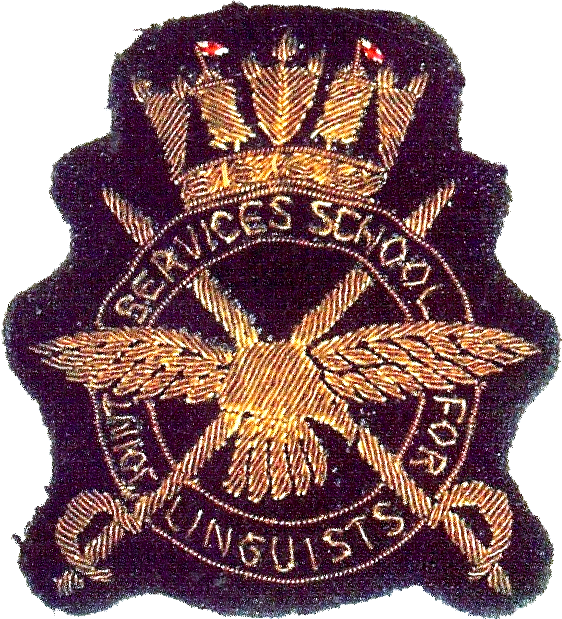 Materials
Materials
-
Buchanan (2010)
-
Cí hǎi (1948)
-
Graham (2003)
-
Hunt e.a. (2007)
- "Preface" and "Timeline", pp. i-xv
- Chapter 1, "Looking into the mirror", pp. 1-9
- Chapter 3, "Mandarins in Whitehall", pp. 24-31
- Chapter 5, "Never daring to ask", pp. 48-55
- Chapter 6, "Gwoyeu Romatzyh", pp. 56-65
- Chapter 7, "Learning and repeating", pp. 64-83
- Chapter 11, "Keen spirits", pp. 113-130
- Appendices C, D, E and F, pp. 177-180
Emily Buchanan, "Listening to China"
BBC News Magazine, 4 February 2010.
Radio report, length: 27'47".
First broadcast on BBC Radio Four on 1 February 2010.
辭海 Cí hǎi entry: "詞"
Pp. 1241 from: 辭海 Cí hǎi
Shanghai: 中華書局. 2nd edition, 1948.
The first edition was published in 1947.
A.C. Graham, Technical terminology entry: "Tz'ŭ 辭"
Pp. 207-209 from: A.C. Graham, "Later Mohist Logic, ethics and science".
Hong Kong: The Chinese University of Hong Kong. Reprint edition, 2003.
The first edition was published in 1978.
Reginald Hunt, Geoffrey Russell and Keith Scott,
Mandarin blue: RAF Chinese linguists in the Cold War, 1951-1962
Oxford: Hurusco Books, 2008.
Background
-
DeFrancis (1950)
John DeFrancis, Nationalism and language reform in China.
Princeton: Princeton University Press, 1950.
-
Swofford (2010)
Mark Swofford, "Gwoyeu Romatzyh"
拼音/Pinyin.info, 2010.
-
Wiedenhof (2004)
Jeroen Wiedenhof, "Purpose and effect in the transcription of Mandarin".
李哲賢 / Lee Jer-shiarn (ed. in chief),
2004 漢學研究國際學術研討會文集 [Proceedings of the International Conference on Chinese Studies 2004].
斗六 / Touliu: 雲林科技大學 / National Yunlin University of Science and Technology, pp. 387-402.
Assignments
85. Compare the entry on 辭 in Graham (2003) with the entry on 詞 in Cí hǎi (1948).
Summarize your comparison in terms of form(s), meaning(s) and characters.
In particular, pay attention to
- historic developments, and to
- semantic relationships in terms of homonomy and/or polysemy.
– Hunt e.a. (2007):
86. Read the assigned sections and bring your reading notes to class.
87. Apart from the name, can you identify the publisher of Hunt e.a. (2007)?
88. Please reflect on the use of the term linguists in the title of Hunt e.a. (2007).
Hint: try to point out similarities and differences between the meanings of English linguist and, for instance, yǔyánxuéjiā in Mandarin or taalkundige in Dutch.
89. On p. 8, we read about the linguistic recrutes' "immersion in the Chinese language".
(a) On the basis of your reading of the assigned sections, please evaluate the appropriatenes of the term "immersion" to characterize the educational methods of the Joint Services School for Linguists.
(b) On the basis of your own experience in Chinese language training, please comment on the relevance of "immersion" as a didactic device today.
90. Consider the table on p. 60, illustrating tone transcription in GR.
(a) For each row, check which of the four forms might be considered most basic.
(b) Explain the pattern that emerges, and explain the exceptions to that pattern.
91. On p. 70, please identify the "two authors", listing at least two other linguistic publications for each.
92. In Appendix C, provide English translations for the Mandarin test sentences #3 and #7.
– Buchanan (2010):
93. Listen to Buchanan's (2010) radio report and bring your listening notes to class.
94. Check if the Mandarin song (0'28") contains any hints of linguistic change over the past half century.
– Swofford (2010):
95. Transcribe the first two paragraphs (42 words) of Dàshuǐ Guòhòu / After the Flood in Gwoyeu Romatzyh.
FYI
eikones
eikones Summer School
Date: 4-9 September 2016
Venue: NFS Bildkritik, Rheinsprung 11, CH - 4051 Basel, Switzerland
Info: Course 1: Iconicity in writing: Practice & constraints
Enigma
"the German Enigma machinese were unlocked" (Hunt e.a. 2007: 3)
This spy story of was the subject of a recent film:
The Imitation Game (2014)
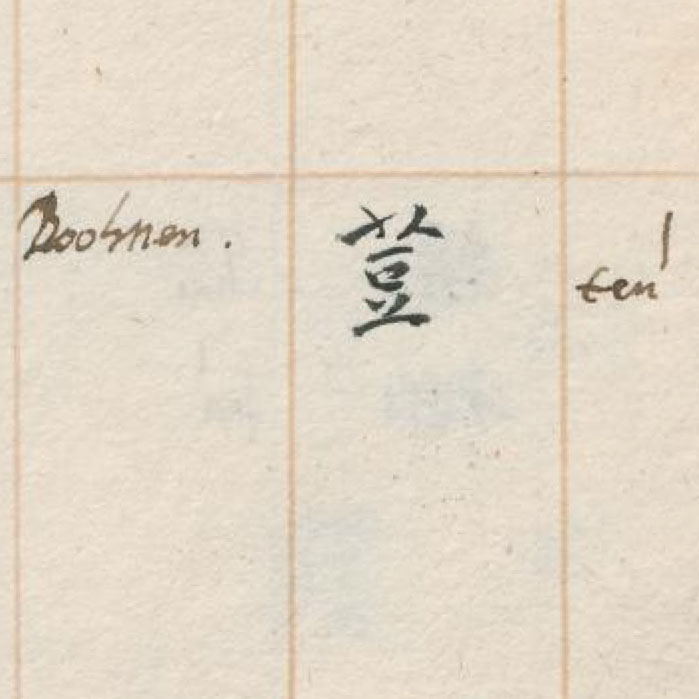 Library excursion: Early sources in Chinese and about Chinese
Library excursion: Early sources in Chinese and about Chinese
Monday 9 May 2016
Today Dr. Koos Kuiper, Curator for Old Chinese and Japanese Printed Books and Manuscripts, will receive us at the
East Asian Library, Van Gulik Room
![]() We meet in our usual classroom, and at the usual time.
We meet in our usual classroom, and at the usual time.
Assignments
Hand-in Assignment #3
Write a draft final version of your term paper.
Hand it in, printed on paper, in my pigeonhole, on or before Monday 16 May.
Please note the format format requirements.
